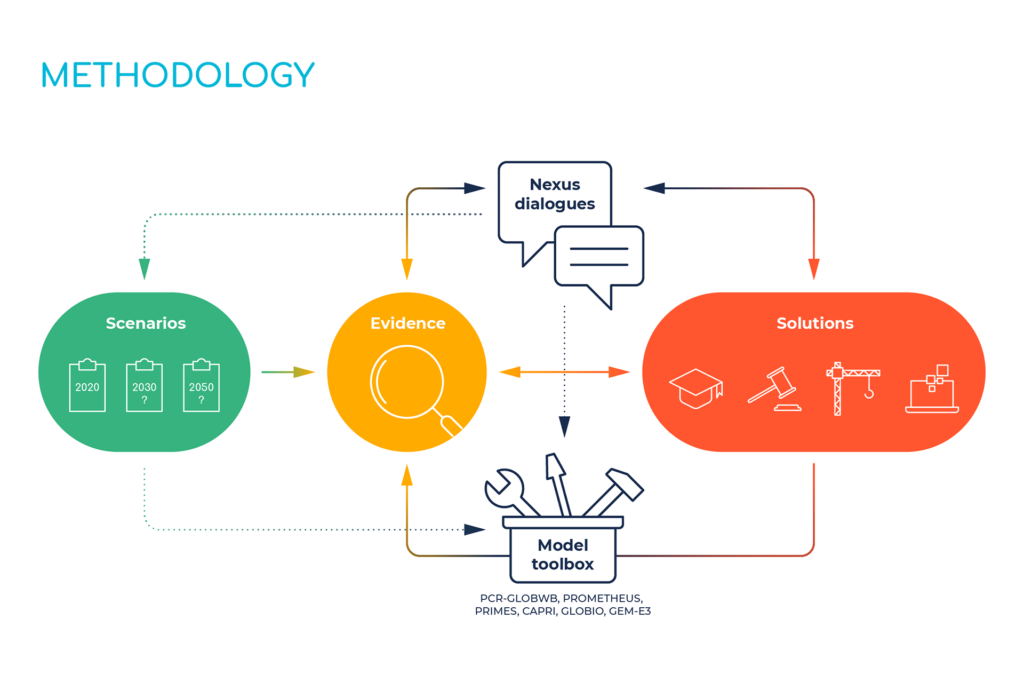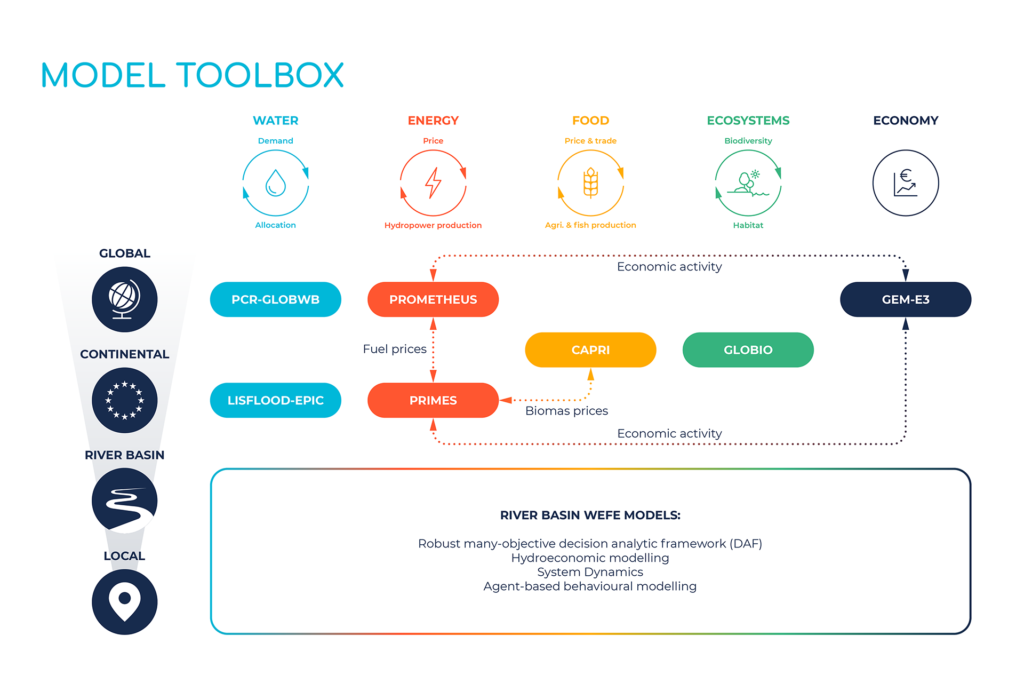GoNEXUS will leverage and expand the existing WEFE knowledge base to propose concrete solutions for better WEFE governance. Our method primarily revolves around scenarios, nexus dialogues, and a model toolbox. Each of these activities looks to define and refine evidence to create solutions for decision-making from global to local levels. GoNEXUS novel approach combines advanced modelling with the participatory approach of the nexus dialogues.

Case studies
We will conduct 8 case studies to showcase the GoNEXUS approach: at the global, at a continental level in the EU and at the river basin level in 6 case European and African case study sites. Nexus dialogues will be held for each of the case study areas.

Nexus dialogues
The nexus dialogues are a series of participatory discussions between stakeholders, policymakers and experts at various levels (including the local/ basin level, EU level, and global). They will help the GoNEXUS team to better understand existing WEFE nexus conflicts and trade-offs, incoherent sectoral policies, synergies, and uncertainties. They will also support the co-design of scenarios, models, and solutions to address nexus problems.
During the dialogue process, stakeholders will explore the projections outlined in our scenarios to discuss risk management across the nexus. Bringing together a diverse group of stakeholders will ensure that synergies and trade-offs for different sectors and WEFE elements can be thoroughly explored. The process hopes to build trust and mutual understanding between these diverse stakeholders to improve the legitimacy and uptake of solutions proposed by GoNEXUS.

Model toolbox
The model toolbox will present GoNEXUS’ modelling efforts at both global and local scales. It will showcase the functional links the project aims to establish between existing global and continental models that tackle separate elements of the WEFE nexus. In addition, it will include basin-level WEFE models which will combine a variety of system analysis techniques for each different case study basin linked to global and continental model results. The model toolbox will not only allow us to assess the viability of our solutions but can also act as a methodological starter kit for future nexus research.
The model toolbox will include:
– Thematic models that consider the interdependency of different sectors as well as policy models for impact assessment
– A combination of existing numerical models of the different sectors of the WEFE nexus from global to basin/local scales
– River basin WEFE models that integrate all relevant nexus elements in case-study-adapted modelling frameworks.
For both the continental and global assessments, our toolbox will start with existing models for climate-water (PCR-GLOBWB and LISFLOOD-EPIC); climate-energy (PROMETHEUS and PRIMES); agriculture and land-use (CAPRI); ecosystems (GLOBIO); and the interaction of the economy, energy, and the environment (GEM-E3). Though these models are already fully operational and have been used for research and decision-making, none of them considers all WEFE components and their interconnections. GoNEXUS will work to establish a fully functional communication system between these models to better account for WEFE trade-offs and links.
GoNEXUS will contribute by:
– making the linkages between sectors and filling the gaps to create a more holistic analysis
– downscaling the assessments of global and continental WEFE models through increased modelling detail.
– enabling a detailed analysis of synergies and trade-offs across WEFE elements through explicitly incorporating WEFE linkages in a single modelling framework
– defining joint efficient and sustainable WEFE management and policies.
The river basin models will be tailored to each of our river basin case studies which will rely on a combination of high-resolution modelling, many-objective decision-making, hydro-economic modelling, system dynamics and agent-based behavioral modelling. By downscaling global model assessments, GoNEXUS will be able to better support work and create possible solutions at the local level.
In addition, the toolbox will also be used to assess the historical and future evolution of the WEFE nexus, providing evidence on the nexus management performance. It will also be used to evaluate the performance of solutions across multiple scales and sectors and assess the impact of GoNEXUS solutions to meet the challenges of climate change and will facilitate the linkages within the nexus to be used by future researchers.
